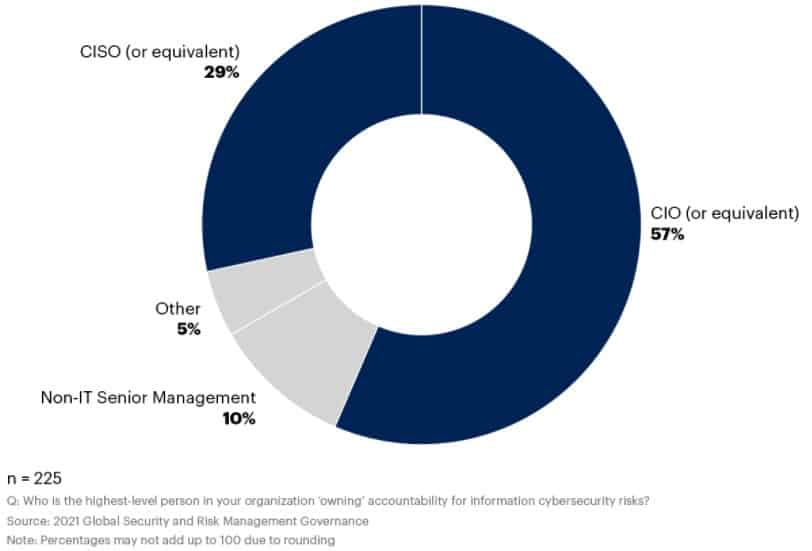A new Gartner survey revealed that 88% of Boards of Directors (BoDs) view cybersecurity as a business risk, as opposed to technology risk. However, only 12% of BoDs have a dedicated board-level cybersecurity committee.
“It’s time for executives outside of IT to take responsibility for securing the enterprise,” said Paul Proctor, distinguished research vice president at Gartner.
He added that the influx of ransomware and supply chain attacks seen throughout 2021, many of which targeted operation- and mission-critical environments, should be a wake-up call that security is a business issue and not just another problem for IT to solve.
Rebalance cybersecurity accountability
Even as business leaders are aware of the need to secure the enterprise against new and evolving threats, responsibility for security mostly lies with IT leadership. A separate and recent Gartner survey found that in 85% of organizations, the CIO, CISO or their equivalent was the top person held accountable for cybersecurity. Just 10% of organizations held non-IT senior managers accountable (see Figure 1).
Figure 1: Highest-Level Person in the Organization Accountable for Cybersecurity

“IT and security leaders are often considered the ultimate authorities for protecting the enterprise from threats,” said Proctor. “Yet, business leaders make decisions every day, without consulting the CIO or CISO, that impact the organization’s security.”
CIOs and CISOs must rebalance accountability for cybersecurity so that it is shared with business and enterprise leaders. Gartner recommends that IT and security leaders work with executives and BoDs to establish governance that shares responsibility for business decisions that affect enterprise security.
Reframe from a business lens
Recent research has found that 66% of CIOs intend to increase cybersecurity investments in the coming year. However, Gartner projections show that overall growth in cybersecurity spending will slow through 2023.
“After years of such heavy investment in security, Boards are now pushing back and asking what their dollars have achieved,” said Proctor.
As security budgets shrink, CIOs and CISOs will need to collaborate closely with executive leadership to reframe cybersecurity investment in a business context. For example, CISOs can offer a range of protection options to business leaders with the costs and risks of each choice clearly outlined.
“CIOs and CISOs must leverage their expertise to increase transparency around investment and risk, to drive shared accountability for security across the business,” said Proctor.





